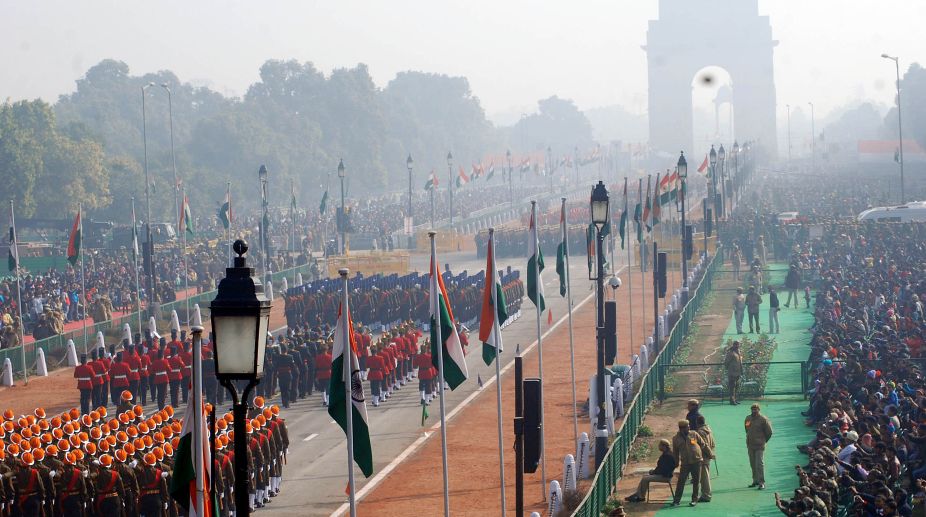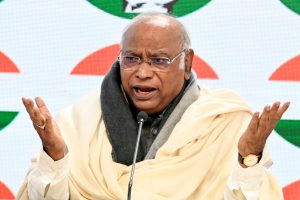A powerful presentation of military pride and prowess is at the core of the highlight of the Republic Day festivity — the parade that begins at the contemporary seat of power and terminates at the iconic Red Fort. Undoubtedly the cultural content of the parade completes the unique mosaic that gives this nation its unique “colour”, but the parade remains essentially a military spectacle and the inclusion of a contingent from the Chief Guest’s armed forces has added an international flavour to the celebration.
For months now have the troops, cadets included, been preparing for their date with history: and the display of military muscle leaves the spectator spellbound. The display of home-built weapons and systems — this year will feature the Tejas LCA and two advanced artillery pieces — testifies to the effort to boost indigenous defence production.
The parade remains a “national event”, the format militates against overt political encroachment. Hence it sets the standard for somewhat similar parades in other centres too. And for all their lamenting traffic disruptions, come 26 January, the ‘Dilliwallah’ regales in being given the “best seat in the theatre”.
Yet this time around the occasion should also cause the top military leadership to reflect on the reality that all the spit-and-polish cannot camouflage the growing resentment in the rank-and-file over a failure to modernise military mindsets, to abandon colonial practices that sharply divide officers and “men”.
On Army Day the Chief of the Army Staff had expressed concern at the recent preference to use social media to air grievances rather than the established systems for seeking redress: he was “addressing” the military community at large. Yet an IAF Corporal, educated enough to understand the implications of his action, has “joined issue” with the Chief.
Across the board the “brass” must understand how deep the resentment lies, how the existing systems have failed to assuage hurt feelings, and how the men are now displaying the “nerve” to give vent to long-suppressed emotions.
The situation is not worrisome from the “discipline” angle alone. A few days back, when Pakistan “returned” an Indian soldier who had strayed across the LOC, the mischievous Inter-Services Public Relations (which dances to the ISI’s tune) claimed that the Sepoy had deserted his unit and “surrendered” because he was disgusted with the treatment meted out by his officers. This belated claim confirms that the adversary is well aware of the situation in the Indian forces, determined to exploit the controversy to its advantage.
The Chiefs of Staff cannot ignore this new “threat”, must sound an alert, galvanise systems to prevent valid grievances from erupting into unrest. There can be no forgetting how sentiments were sinisterly fuelled after “Operation Bluestar”.










